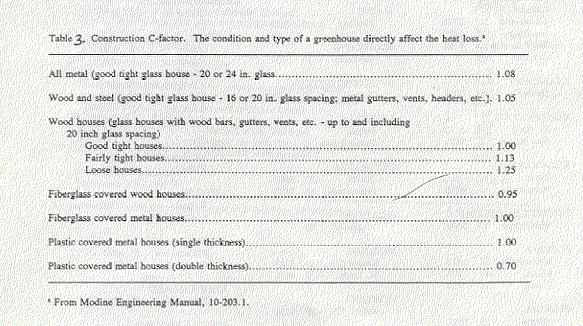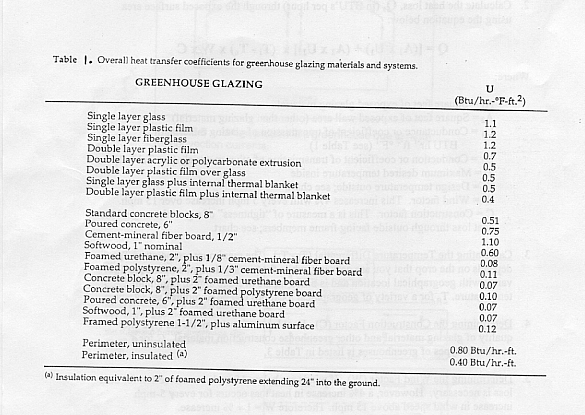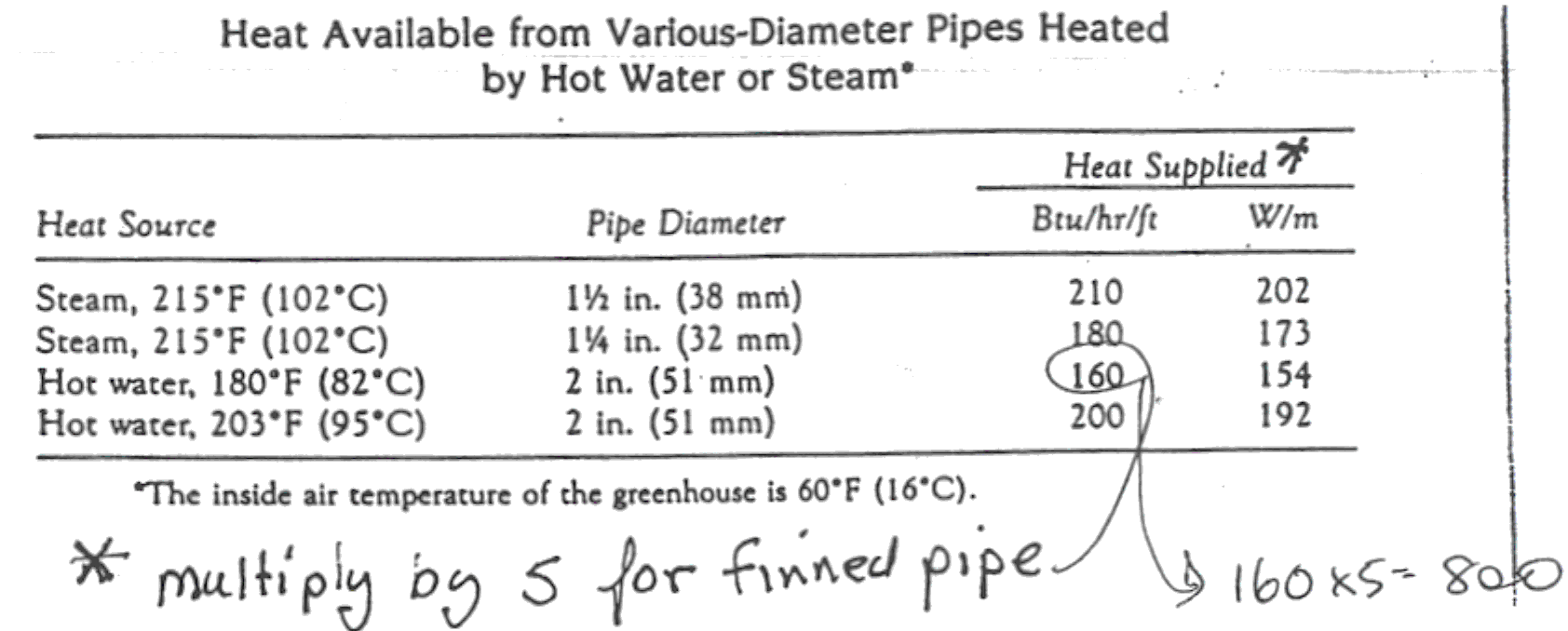![]()

When determining Heating Requirements here are Five Steps that need to be followed!
![]()

When determining Heating Requirements here are Five Steps that need to be followed!
Step One: Determine the Exposed surface area of the greenhouse glazing material and other Exposed walls (for example concrete block skirt wall). What is meant by exposed walls or surfaces are materials that are exposed to the outdoors. Because if you have a gutter connected greenhouse, the only walls that may be exposed are probably the roof, side and back wall. The two side walls are usually protected by the other houses.
Step Two: Calculate the heat loss of the Greenhouse, Q, (in BTU's per hour) through the exposed surface are using the equation below.
Q = [ ( A1 x U1) + ( A2 x U2) ] x ( Ti x To) x W x C
Where:
| A1 |
Square feet of exposed glazing material |
| A2 | Square feet of exposed wall are (other than glazing material) |
| U1 | Conductance or coefficient of transmission of glazing material ( See table One for the glazing you are going to be using) |
| U2 | Conduction or coefficient of transmission of other materials (See table One) |
| Ti | Maximum desired temperature inside (Depends on Type of Crop) |
| To | Design temperature outside (This depends on where you live - Find your lowest average temperature) |
| W | Wind Factor. This increase 4% with every 5 mph increase over 15 mph |
| C | Construction Factor. This is a measure of "tightness" of a greenhouse and the heat loss through outside facing frame members ( See Table 3) |
Step Three: Calculating the Temperature Differential ( Ti - To) The maximum temperature Ti depends on the crop you are growing, while the outside design temperature To varies with geographical location and is bases on the average annual minimum temperature.
Step Four: Determining the Construction Factor ( C ) Heat loss is dependent on the type and quality of glazing material and other greenhouse construction material. The construction factor for a number of types of greenhouses is listed in Table 3.
This is Table 3: use for Correction Factor ( C )

Step Five: Determining the Wind Factor ( W ) If winds are below 15 mph, no correction for heat loss is necessary. However, a 4% increase in heat loss occurs of every 5 mph increase in wind speed above 15 mph. Therefore W = 1 + % increase.
|
Wind Speed
|
W
|
|
<15 mph
|
1.00
|
|
20 mph
|
1.04
|
|
25 mph
|
1.08
|
|
30 mph
|
1.12
|
This Table Give You Info for U1 and U2

Here is an Example Problem:
You have 31,000 square feet of exposed single layer glass and 13,000 square feet of exposed poured concrete wall at 6 inches thick. The maximum desired temperature you want for the inside of your greenhouse is 65 degrees and for the area you live in the lowest average temperature is 0 degree. Also your average wind speed for your area is less than 15 mph. You also spared no expense and went with an all metal house with 24 inch glass.
A1 = 31,000
A2 = 13,000
U1 = 1.1
U2 = .75
Ti = 65
To = 0
W = 1.00
C = 1.08 ( U1 through C were all found in the charts I provided )
Q = [ (31,000 x 1.1) + (13,000 x .75)] x (65-0) x 1.00 x 1.08
Q = 3,762,720 BTU's lost per hour
Know you have to determine what type of heating source you will want to use. Some choices are: Heating pipes using either hot water or steamed. Another choice is using propane or natural gas heaters.
I recommend using stacked steam pipes that are finned. Steam at a temperature at 215 degree Celsius in 1 1/2 inch diameter pipes will produce 210 BTU's per hour per foot. Then if you use finned pipes the BTU's per hour per foot is multiplied by five. This means instead of 210 BTU's you get 1,050 BTU's per hour per foot.

For the example problem if you use steam and finned pipes you need 3,584 feet of piping.
This seems like a lot of piping but, when you use stacked pipes the area of pipes decreases.

So, when choosing the what type of heating you would like to use sometimes you have to be willing to spend more at first, but in the long run your heating costs will be lower, which will save you more than if you used cheaper starting material.
If you have questions concerning plant material search this site.